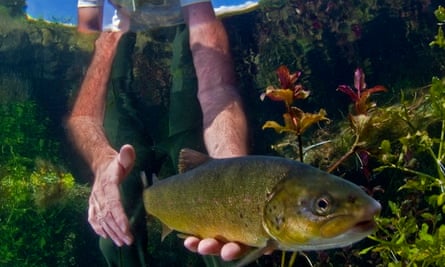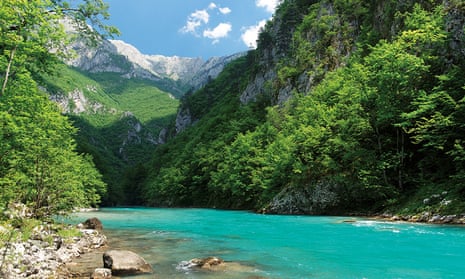Nearly one in 10 of Europe’s fish species will be pushed to the brink of extinction by a constellation of hydropower plants planned in the western Balkans, new research has found.
Eleven endemic species would be wiped out, seven more would be critically endangered, four types of sturgeon would be devastated and the number of endangered species would double to 24, according to the University of Graz report.
Prof Steven Weiss, the paper’s author, told the Guardian: “It is the largest systematic construction plan with negative environmental impacts that I know of, since world war two.”
Altogether, the analysis finds that 49 of Europe’s 531 freshwater species would face either extinction or the loss of 50-100% of their Balkan distribution.
Weiss said: “The high density of what is being planned affects everything in the region. It transforms whole river systems into a series of reservoirs that need to be flushed. It breaks up migration corridors, and drains and isolates wetlands that have a dramatic effect on birds. There is a whole chain reaction.”
The 11 fish populations most at risk are: Cobitis jadovaensis; Alburnus vistonicus; Delminichthys jadovensis; Delminichthys krbavensis; Phoxinellus dalmaticus; Telestes polylepis; Telestes turskyi; Telestes ukliva; Knipowitschia mrakovcici; Eudontomyzon hellenicus and Zingel balcanicus.

These are all endemic to the Balkans, Europe’s most important biodiversity hotspot for molluscs and fish.
One EU official told the Guardian that the study “should give us pause for thought. It’s clearly not possible for everyone’s plan to be built. Otherwise, you’re just pouring concrete over the entire region.”
RiverWatch, the conservation group which co-commissioned the research, estimates that 2,800 hydropower plants are planned or under construction in the region, more than a third of them on Natura 2000 sites.
Just three pristine waterways – the Neretva basin, Morača and the upper Drina system – alone host around 50 endangered and protected fish species.
The countries through which they flow – Bosnia-Herzegovina, Serbia and Montenegro - are all investing in hydro, in a bid to meet the EU’s clean energy targets before joining the bloc, even though research suggests that hydropower annually emits as much methane as Canada.
“This is one of the very painful activities we have to go through,” the EU source said. “These countries have plans for hydro to align with the EU’s rules on renewable energy but it is a sad state of affairs. The alternative for a number of them is not solar or wind, but coal and particularly, lignite.”
The EU’s leverage over countries not yet in the bloc was limited to offering guidelines on standards, although technical assistance for environmental protection might also be considered, the official added.
Ulrich Eichelmann, Riverwatch’s chief executive, said: “This report proves that Balkan rivers are the fish paradise of Europe. At the same time it is unbelievable that in the 21st century, hydro investors and politicians are risking this enormous natural value for something they call ‘green’ energy.”
